How One Apple Transformed Produce Purchasing
Chefs and food lovers have long been some of America’s loudest health and environmental advocates. But over the last ten years, farm-to-table dining has spread from the elite tables of Northern California to the counters of national burrito chains. Today, even casual diners are expected to understand their lunch’s impact on their health and the health of the planet. That’s why we’ve created a series called conscious cuisine found here and distributed through the Conde Nast Media Network in Bon Appetit and WIRED. This series explores the complex relationship our meals have with the ecosystem at large. Be warned, you may never look at an apple the same way again.
At some point during my California childhood, I stopped eating apples. There was a brief affair with the green and tart Granny Smith, followed by a conversion to the firm and flavorful Fuji. But the archetypal apple of my youth, the Red Delicious, had inexplicably transformed into a thick-skinned mealy ghost of its former self that still haunts fruit bowls everywhere.
Then one afternoon well into my adulthood, I was perusing fruit samples at the farmer’s market and came across a new variety. Its coloring wasn’t terribly remarkable— a rosy blush with yellow undertones. But as soon as I took my first bite, it was a revelation—even better than what an apple should taste like. It was juicy, sweet and balanced with the perfect tartness, all packed into a profoundly satisfying crunch that snapped me out of my apple stupor. And I wasn’t the only one who felt this way.
It was called the Honeycrisp, and in the intervening years, it became one of the most popular apples in the country, not to mention one of the most profitable items at the market. But now, as more growers plant Honeycrisp—and its trendy descendants like the SweeTango and the EverCrisp—apple experts are wondering when supply will outpace demand. Will the annual Honeycrisp crop ever languish in industrial storage until it’s as unremarkable as today’s Red Delicious?
“It’s going to tank,” Ian Merwin, emeritus professor of pomology at Cornell University, told me. “It’s just a matter of when.” In any case, the Honeycrisp’s meteoric rise—and its precarious reign—illustrates how industrial agriculture and foodie culture are conspiring to change the makeup of our most basic foods.
The making of a designer apple
The Honeycrisp was created in 1960 at the University of Minnesota through apple cross-breeding and released in 1991, marking the start of a tree-fruit phenomenon. Thanks to a genetic variation, Honeycrisp cells are twice the size of most other apples, resulting in its signature, addictive crunch.
“People were just obsessed with that apple,” said Merwin, who also runs the Black Diamond Farm orchard and cidery in the Finger Lakes region and sells heirloom apple varieties locally.
Within four years of the first serious Honeycrisp plantings, yields reached 94,000 boxes. By 2011, they skyrocketed to 3.7 million boxes. The Honeycrisp is now the most planted variety in the Washington State, the country’s biggest apple producer.
But the Honeycrisp is also a “finicky” apple, Merwin said. Honeycrisp growers estimate that it costs two to three times as much to produce as do top-sellers like Fuji and Gala. Originally bred in Minnesota, the Honeycrisp tree prefers colder climates, where the season only lasts between September and December. The fruit itself is delicate and, as a result, doesn’t store well long-term. “If you drop an apple two inches, it’s bruised,” Merwin said.
This partly explains why, while your standard “low-grade” apples such as Red Delicious, Gala or Fuji sell wholesale for roughly $100 a bin (800 to 1,000 pounds of apples), Honeycrisps go for about four times that. Top that with a markup of two or three times the wholesale cost—more than $3 a pound, compared to about $1.50 for Red Delicious—and they’re still one of the most profitable items in the supermarket.
The next king of apples
The success of the Honeycrisp ushered in a new wave of designer apple breeds like Ambrosia, Jazz, Cosmic Crisp, Ruby Frost and Snap Dragon. But it would be premature to say any one of these catchy-named upstarts will permanently unseat the Honeycrisp.
It is safe to say, however, that the next big thing in apples will share the Honeycrisp’s signature crunch. “The crisp gene of Honeycrisp is the one that changed the game. That’s when people decided they wanted their apples to be crunchy,” said Jacobson. “In 15 to 20 years, just about every apple you buy at the grocery store will be crunchy like a Honeycrisp.”
Just as important, the Honeycrisp brought back consumers who had been turned off by stale apples, reinvigorating the industry as a whole. The newfound interest in high-quality produce paved the way for small, local producers like Merwin, whose apples will never sit in storage. “Our country has gone through an incredible awakening about food,” he said. “Half the growers I know wouldn’t be in business if it weren’t for that.”
Thanks to the Honeycrisp, in other words, we’ll never go back to chalky, saccharine apples. Especially if we’re willing to wait until fall.
Article by Claudine Ko







